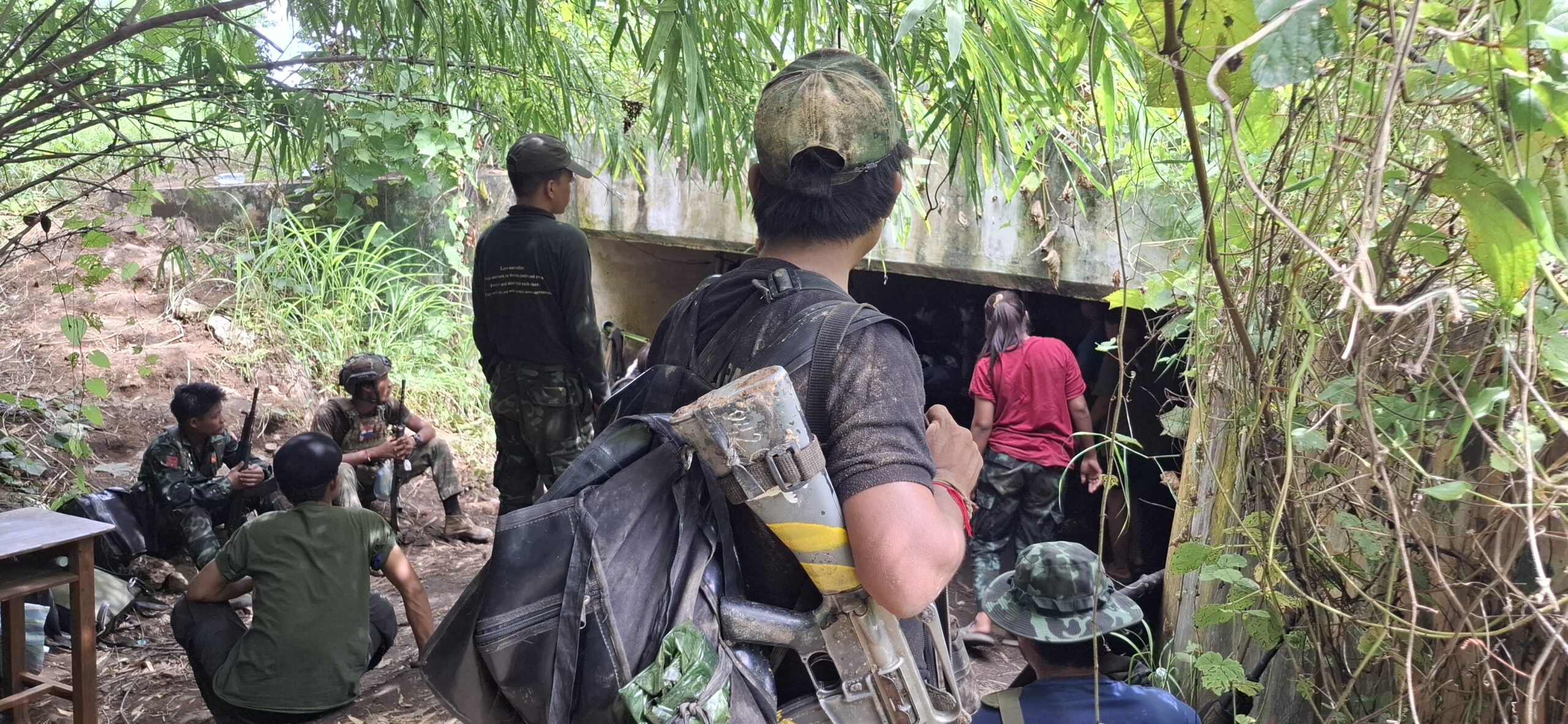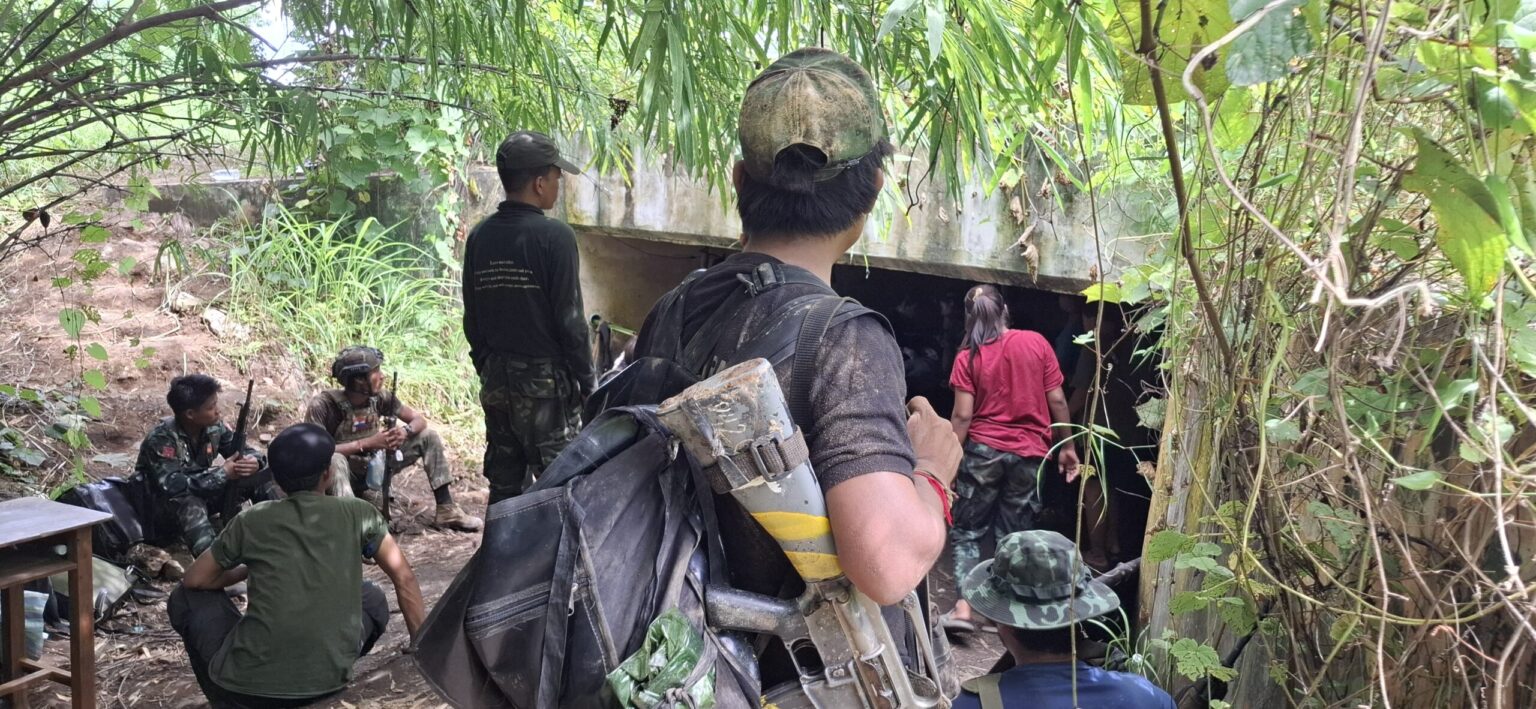The Battle of Pasaung was a crucial fight for the Burma resistance forces, which kicked off on August 14, as they tried to retake their ethnic states from the Burma army, which is oppressing and murdering the civilian population (read my other stories about the lead-up to the battle and the early part of the fight itself on The Gateway Pundit).
On the morning of the battle, the Karenni Nationalities Defense Force, one of the resistance armies, dropped me off at the Free Burma Rangers (FBR) casualty collection point, where I photographed the living and the dead, along with the soldiers, medics, and volunteers who risked their own lives to save others.

In the afternoon, I jumped on a truck headed back to the front lines and got off just before a bridge that looked like it would be a primary target in any other war. The difference between being “at the front” versus at the casualty collection point, which wasn’t terribly far behind, was that the explosions were more frequent. At the collection point, we could hear artillery and were occasionally snooped by Chinese-made Y-12 planes that dropped ordnance nearby. Here at the front, the ordnance was falling danger close. And it was constant.
The soldiers guarding the bridge had an underground bunker, and all day they alternated between guarding the road and diving into the bunker when the planes began to dive. I have been involved in this war off and on for 20 years. During the first ten years, planes were a non-issue. For the first 14 years there were no drones.
Now, drones and airstrikes are among the biggest causes of casualties. And most of that hardware and technology comes from Russia and China, despite international sanctions and condemnation. International sanctions are worth about as much as the paper they’re printed on, about as effective at ending this war as they would be at stopping a tidal wave.
Almost immediately after I arrived, I heard small-arms fire about 20 meters away. At first, I thought we were being overrun, but then I realized it was a warning that jets were diving, and we all dove into the bunker. Another sound I heard for the first time was strafing runs. When I was at the front in 2007 and 2008, there were almost no planes and only the occasional airstrike.
Even in Demoso, the city in Karenni State where I had been for the past three weeks, we heard and saw airstrikes, drone and mortar attacks all day, but I never heard strafing. At the front, the planes dove and opened up with their 30 mm autocannons. I couldn’t imagine getting caught in those crosshairs. The damage a 30 mm round can do to a human being is horrendous.
Ask any military man and they’ll tell you a soldier’s life is “hurry up and wait.” It took the soldiers and me days to cross the country and reach the battlefront, with delays ranging from hours to overnight while waiting for the next truck or boat to carry us to the next stage of the journey.
During that time there were airstrikes, deaths, and sudden changes of plan. But there were also moments of laughter, singing, and joking with the soldiers. We cooked and ate when we had food; when we didn’t, there was nothing. Sometimes civilians shared with them, sometimes other units provided food, and sometimes we were able to buy it.
But a soldier’s life is mostly moving and waiting in boredom, until the battle, which once again becomes an exercise in waiting and boredom punctuated by terror and pain.
At the front, I connected with the PL Army, one of the Karenni armed groups. The commander recognized me from a previous mission, so he looked after me as best he could. Their supplies were almost nonexistent, but he managed to give me several bottles of water and some cookies.
I sat with them in their outpost guarding the bridge, and while artillery and airstrikes boomed on both sides of the river, I kept staring at the bridge, thinking, What a perfect target—why haven’t they blown it up yet? After about an hour of watching planes fly overhead, dropping bombs but skipping the bridge, I figured there must be a reason it wasn’t being hit, making it, ironically, the safest place in Burma. So, I went out and sat on the bridge with the commander.
We sat out there watching the bombs fall, powerless to do anything about them. Just as we were taking a photo, a jet came overhead. I kept my eyes on the camera; he looked up at the sky. Our two disparate reactions had an equal impact on the outcome of the war, which was none.
Toward evening, I asked some soldiers to take me back to the Rangers. From the casualty collection point, I caught an ambulance back to the city. The next morning, I went with the priest to attend a mass wake for some Karenni Army soldiers killed in the battle. Story to come.
The author, Antonio Graceffo, standing in front of a church hit by a junta army attack. Reporting from Burma via Starlink.
Read the full article here


